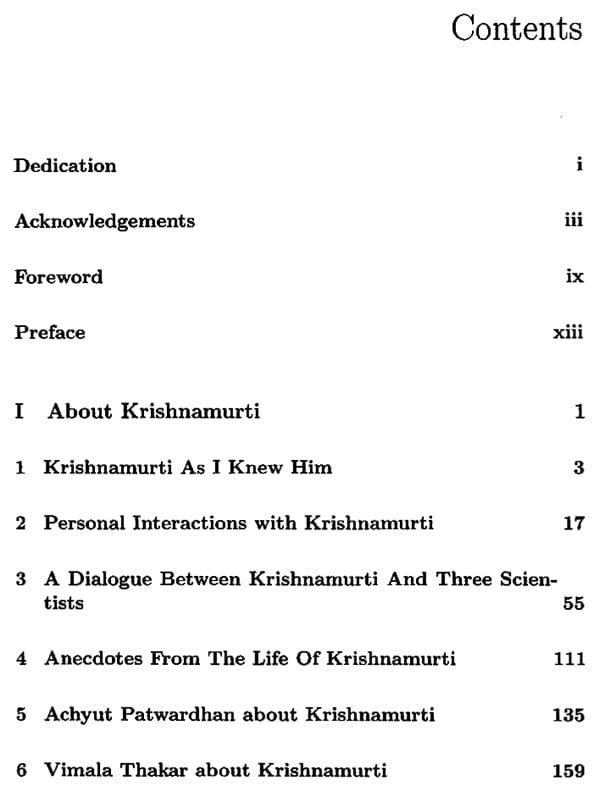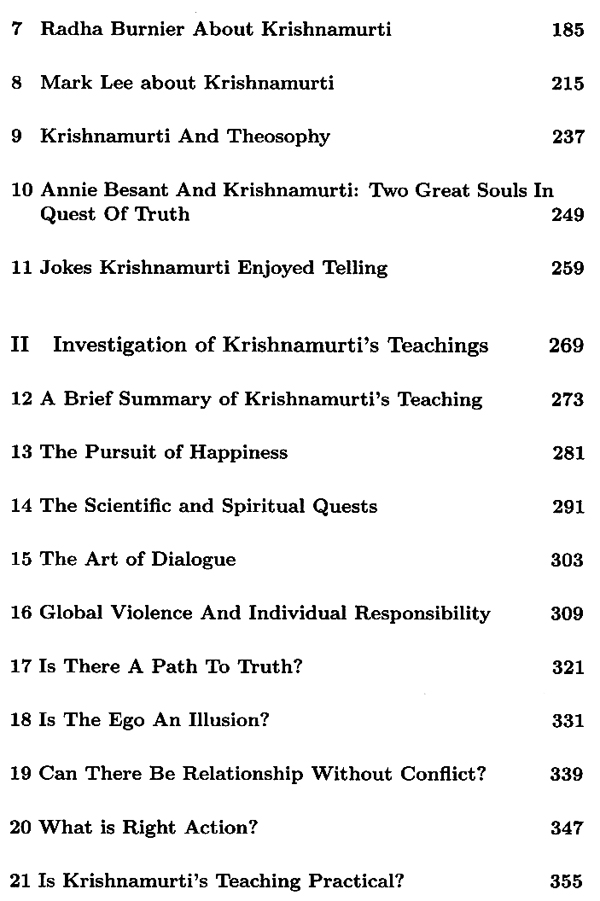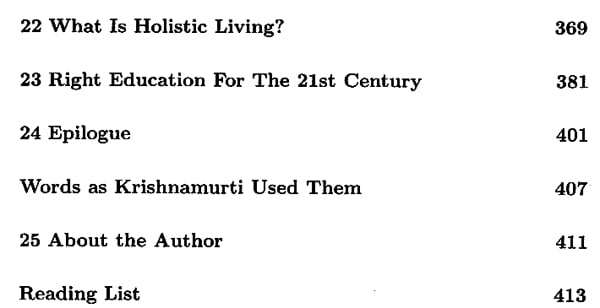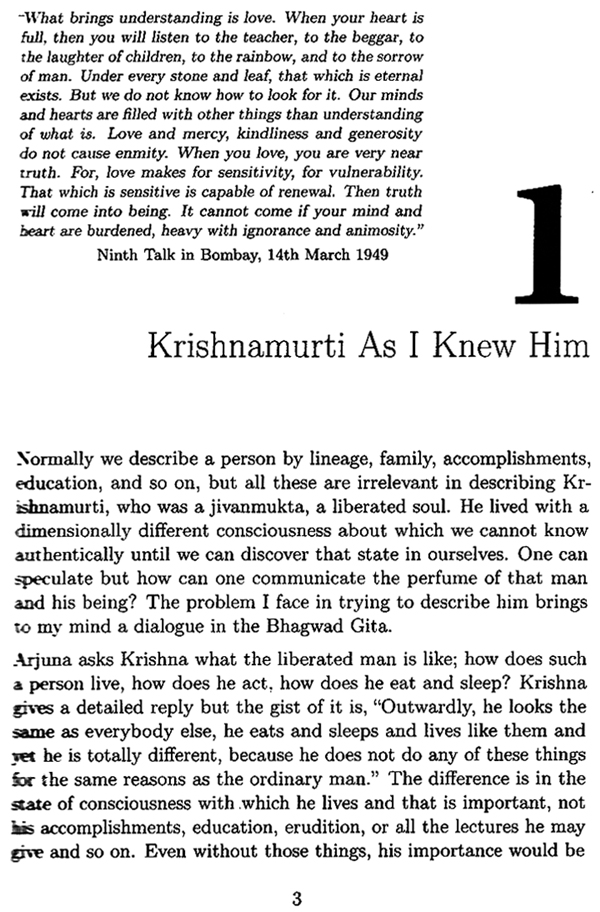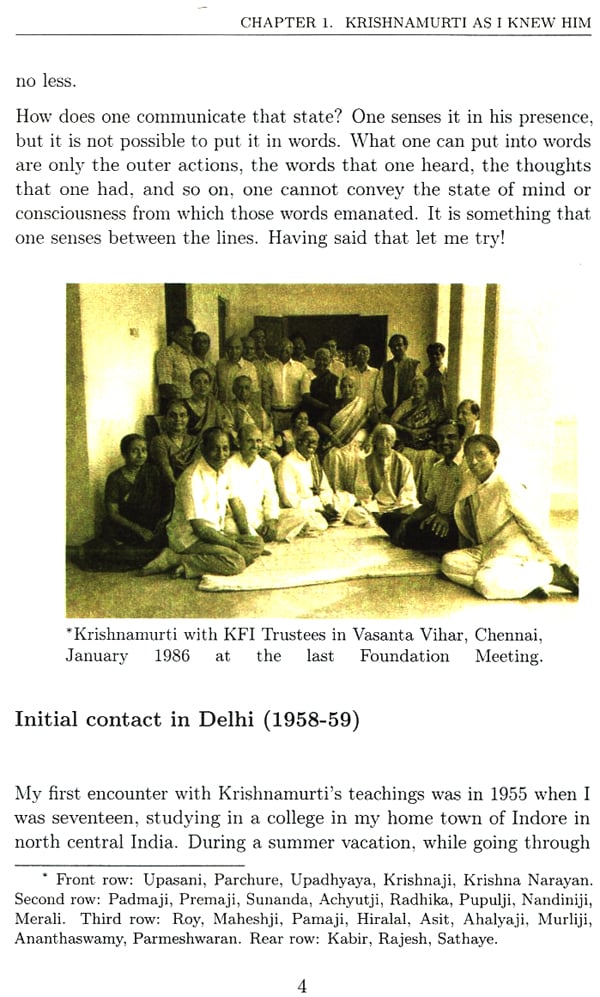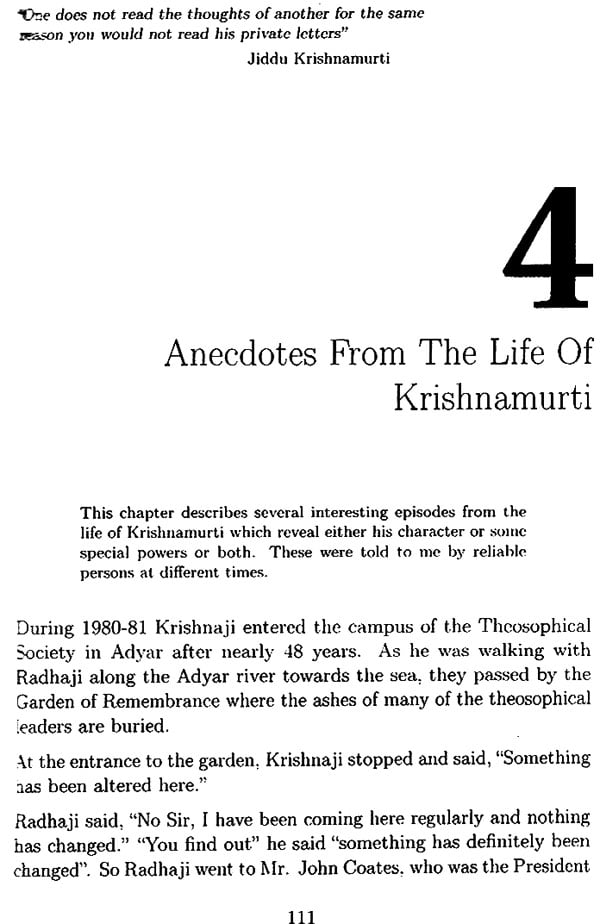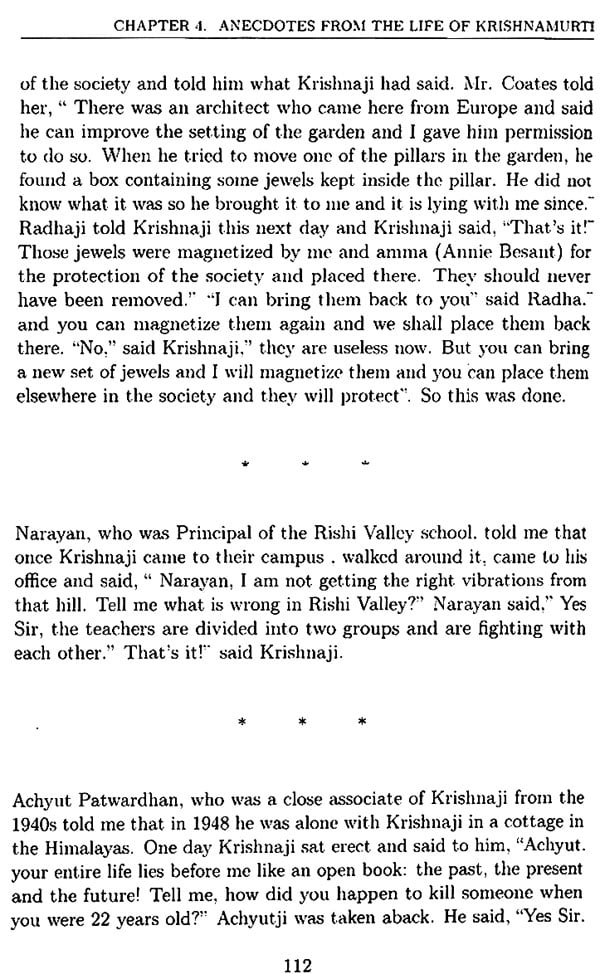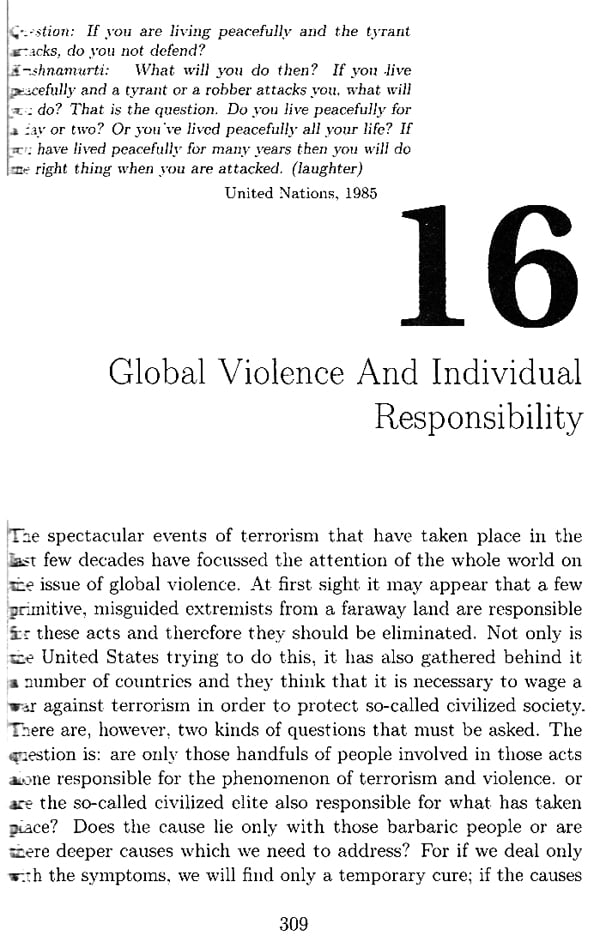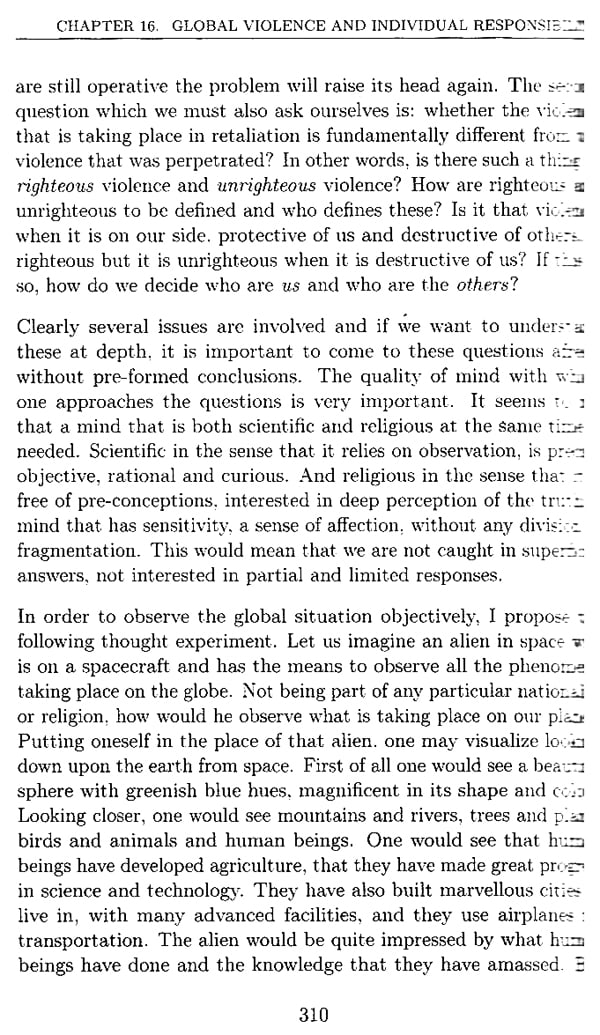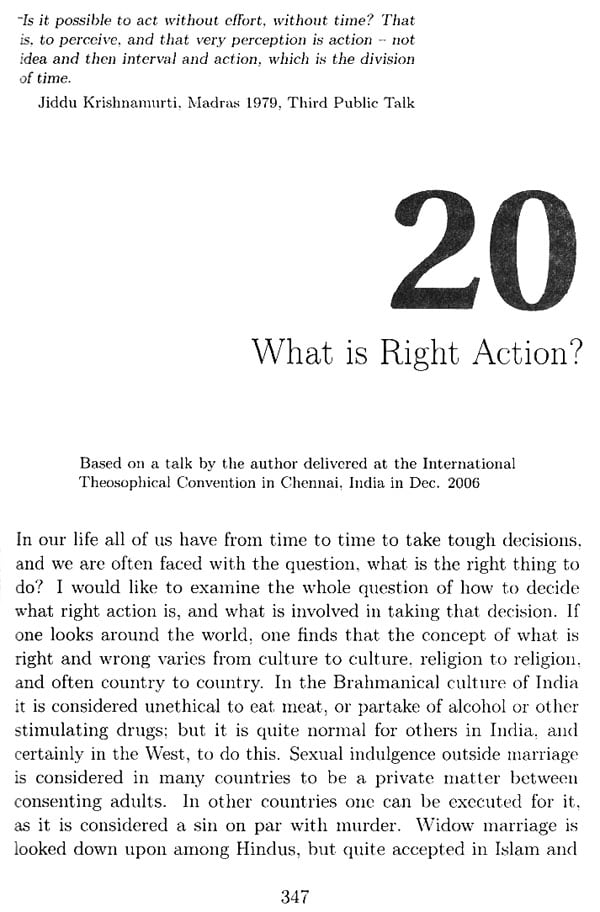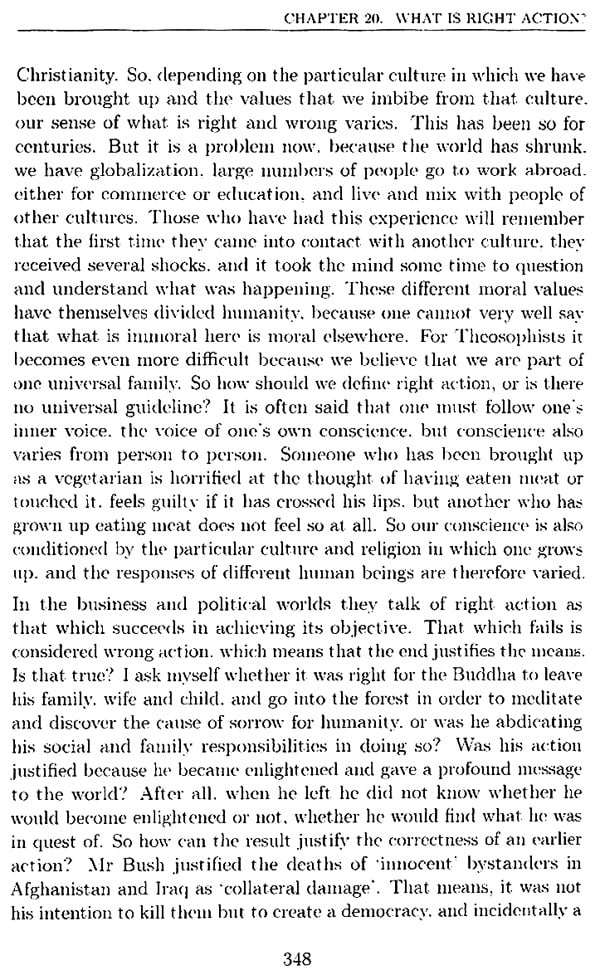
A Jewel on a Silver Platter (Remembering Jiddu Krishnamurti)
Book Specification
| Item Code: | NAY152 |
| Author: | Padmanabhan Krishna |
| Publisher: | PILGRIMS PUBLISHING,VARANASI |
| Language: | English |
| Edition: | 2015 |
| ISBN: | 9789350760567 |
| Pages: | 431 |
| Cover: | PAPERBACK |
| Other Details | 8.50 X 5.50 inch |
| Weight | 490 gm |
Book Description
I am delighted to write a foreword to a book by my friend Krishna about J. Krishnamurti, an embodiment of the Buddha consciousness for many, the Socrates of the 20th century for some, and "more of a phenomenon than a person," as remarked by Vimala Thakar in an interview with the author. Krishnamurti was an extraordinary person, with a quality of consciousness which cannot be explained in any rational terms, and he himself was not able to explain how he came to that consciousness which was free of all ego constraints.
Krishna the author is a remarkable man with an acute scientific mind and a great spiritual sensitivity. He was closely associated with Krishnamurti for nearly three decades. It is clear from several accounts in the book that Krishnamurti had a very special and affectionate appreciation of and regard for Krishna whom he persuaded to become the Rector of the Rajghat Education Centre and also the principal of the Rajghat Besant School. Hardly five weeks before his death he said to Krishna, "There are very few people in the world I trust completely and you are one of them." In this book Krishna gives many details about the character of K and at the same time manages to maintain the mystery that K was whom he approaches with awe, respect and humility.
He tells us much about K but does not claim to explain him. Krishna has brought an enormous amount of information about the extraordinary nature of K through his personal recollections of his numerous meetings with Krishnamurti and sensitive interviews with people like Vimala Thakar, Achyut Patwardhan and Radha Burnier who were very close to K. He enjoined them to speak candidly for the sake of those who would not have the opportunity to know K personally. Although I had known Krishnaji for a couple of decades and interacted with him on numerous occasions, I am fascinated by many new and interesting details.
Krishnamurti's teaching is not easy to summarize. I am happy to learn in this book K's own response when he was asked by someone to summarize his entire teaching in one sentence: "Attempt without effort to live with death in futureless silence." And another remark in the book clarifies K's view: Somebody asked K about his teaching and he said "Sir there is no such thing as my teaching; you don't have to understand the teachings; you have to understand yourself. The entire purpose of the teaching is to make you realize the importance of understanding yourself" We cannot be sure whether anyone touched the quality of the consciousness of Krishnamurti, but Krishna comes as close as anyone I have met in understanding and living the teachings of K. It is difficult for me to believe that anyone interested in either Krishnamurti the man, or in his teaching will not be interested in reading this book by Krishna. It reveals both the warmth of Krishnamurti as well as his extraordinary consciousness. Krishna's detailed exploration of many aspects of K's teaching regarding serious human issues is clear and insightful. In my judgment Krishna is the best living expositor of K's teachings. I am personally grateful that Krishna has written this book.
The story of J.Krishnamurti's life is both an enigma and a mystery for humanity to explore. How did a weak, dull child born in a middle class family in a small village in south India become something like the Socrates of the 20th century with virtually no formal education or training? How did Leadbeater and Annie Besant of the Theosophical society discover this boy at the young age of 14 and predict that he was going to be the world-teacher when all visible signs were to the contrary? And they never wavered despite the considerable opposition and ridicule faced by them because of this prediction. The boy was weak and emaciated; he could not attend any school or pass any examinations. Even Bernard Shaw laughed saying, "Annie, there goes your messiah!" Despite all this, she staked her entire reputation by announcing in the 1920's in her White Hall lectures in London about the coming of the world-teacher. Subsequent events have proved that she was right!
I have talked to several close associates of Krishnamurti to under-stand the mystery his life presents but no one really knew what his consciousness was like or what the so-called 'process' which he went through starting 1922, periodically over 60 years, really was. While descriptions exist, it defies all rational explanations. The only way to really understand what that consciousness went through or was like would be to experience it in oneself. Until then one is like a person blind from birth. Whatever one may tell him can never let him know what we mean by colour. Whatever he may imagine from our descriptions is likely to be false! The only way to reveal the fact to him would be to operate on his eye and enable him to see for himself!
This is what Krishnamurti was doing all his life: wanting to awaken our intelligence so that we could see for ourselves that which he had perceived: He said we could perhaps get a glimpse of it if we lived the teachings but no one has been able to do that! Does it mean it is impossible? Then how did he come upon it? After all, he should have been even more strongly conditioned into theosophical ideas than many of us are by the culture and environment in which we are born. He insisted that it is possible for any of us to free ourselves of our conditioning and look at life and the world without coloured glasses: see it as it is without any image. To me the very existence of a man like him is proof that it is possible; but there must be very deep barriers within each one of us that prevent us from penetrating through our conditioning.
Otherwise why should there be so few human beings like the Buddha or Jesus who could completely break away from their past? Since his consciousness is a great mystery for all of us I have decided to reveal in this book, whatever little we know of how it functioned. Apart from my own interactions with him I have also interviewed several of his close associates about their perception of him. This book is not meant to be a biography; there are already several excellent biographies which describe in detail the facts of his life. Indeed, but for the fact that he lived in the 20th century and his life is so well documented, one would have found it hard to believe that such a person actually existed. His life reads like a legend from mythology! The mystery of his existence poses a challenge before each one of us to discover for ourselves the state of consciousness with which he actually lived and which he tried his best to invoke in us. The first part of this book (Part I) is devoted to describing what Krishnamurti was like and how his consciousness operated.
It includes observations of my personal interactions with him as well as those of other colleagues who were close to him. Part II of this book is devoted to the exploration of Krishnamurti's teachings and of various fundamental questions of our life in the light of those teachings. In this part, in order to make each chapter complete in itself, the reader will find some repetitions since all aspects of our life are intertwined with each other and cannot be completely separated. I hope the reader will forgive me for this. This book is not meant to be read sequentially like a novel. You can read any chapter you wish, even if you have not read the previous ones.
**Sample Pages**
